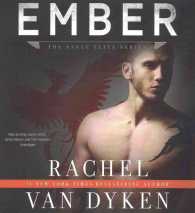Full Description
KEYS FOR WRITERS WITH WRITING ASSIGNMENTS is an easy-to-use resource that will help you improve your writing in all of your courses as well as your career. Color-coded tabs enable you to find the right coverage quickly and easily, and clear explanations and the visual presentation of concepts help you to quickly find answers to your grammar and writing questions. Student sample papers provide models of writing in different disciplines, with complete up-to-date coverage of MLA, APA, and other documentation formats. End-of-section exercises let you practice and check your understanding of important points, while two-page spreads on 15 different assignments guide you in work you are likely to encounter in your courses. Each student text is packaged with a free Cengage Essential Reference Card to the MLA HANDBOOK, Eighth Edition.
Contents
Keys to Common Writing Genres.Part I: THE WRITING PROCESS. 1. Critical Thinking, Reading, and Writing.2. Drafting in Stages. 3. Revising, Editing, and Proofreading. 4. Writing and Analyzing Arguments. 5. Writing in Academic Disciplines.Part II: RESEARCH/SOURCES/DOCUMENTATION. 6. The Research Process: A Conversation with Sources. 7. Searching for Sources. 8. How to Evaluate Sources. 9. How to Avoid Plagiarizing. 10. How to Use, Integrate, and Document Sources. Part III: MLA DOCUMENTATION. 11. Citing Sources in Your Paper, MLA Style. 12. MLA List of Works Cited. 13. A Student's Research Paper, MLA Style. Part IV: APA, CSE, AND CHICAGO DOCUMENTATION. 14. Citing Sources in Your Paper, APA Style. 15. APA List of References. 16. A Student's Research Paper, APA Style. 17. CSE Style of Documentation. 18. Excerpt from a Student's Research Paper, CSE Style.19. Chicago Manual of Style: Endnotes, Footnotes, and Bibliography.20. Excerpt from a Student's Research Paper, Chicago Style.Part V: DESIGN, MEDIA, AND PRESENTATION. 21. Document Design. 22. Visuals. 23. Online Communication Forums.24. Oral and Multimedia Presentations.25. Portfolios. 26. Resumes and Letters of Application. 27. Business Letters and Memos.Part VI: STYLE: THE FIVE C'S. 28. First C: Cut. 29. Second C: Check for Action. 30. Third C: Connect. 31. Fourth C: Commit. 32. Fifth C: Choose the Best Words. 33. Revising for Style: A Student's Drafts. 34. Style Tips. Part VII: COMMON SENTENCE PROBLEMS. 35. Trouble Spots and Terms. 36. Fixing a Sentence Fragment. 37. Run-ons and Comma Splices. 38. Sentence Snarls. 39. Verbs. 40. Passive Voice. 41. Subject-Verb Agreement. 42. Pronouns. 43. Adjectives and Adverbs. 44. Relative Clauses and Relative Pronouns.Part VIII: PUNCTUATION, MECHANICS, AND SPELLING. 45. Commas. 46. Apostrophes. 47. Quotation Marks. 48. Semicolons and Colons. 49. Other Punctuation Marks. 50. Italics/Underlining. 51. Capitalization.52. Abbreviations.53. Numbers.54. Hyphens.55. Online Guidelines.56. Spelling. Part IX: WRITING ACROSS LANGUAGES AND CULTURES. 57. Language Diversity and Edited American English: Challenges for Multilingual Writers. 58. Nouns and Articles.59. Verbs and Verb Forms. 60. Sentence Structure and Word Order. 61. Prepositions and Idioms.62. Language Learners' FAQs. Part X: GLOSSARIES.63. Words to Watch For: Glossary of Usage. 64. Glossary of Grammatical Terms.Index.








